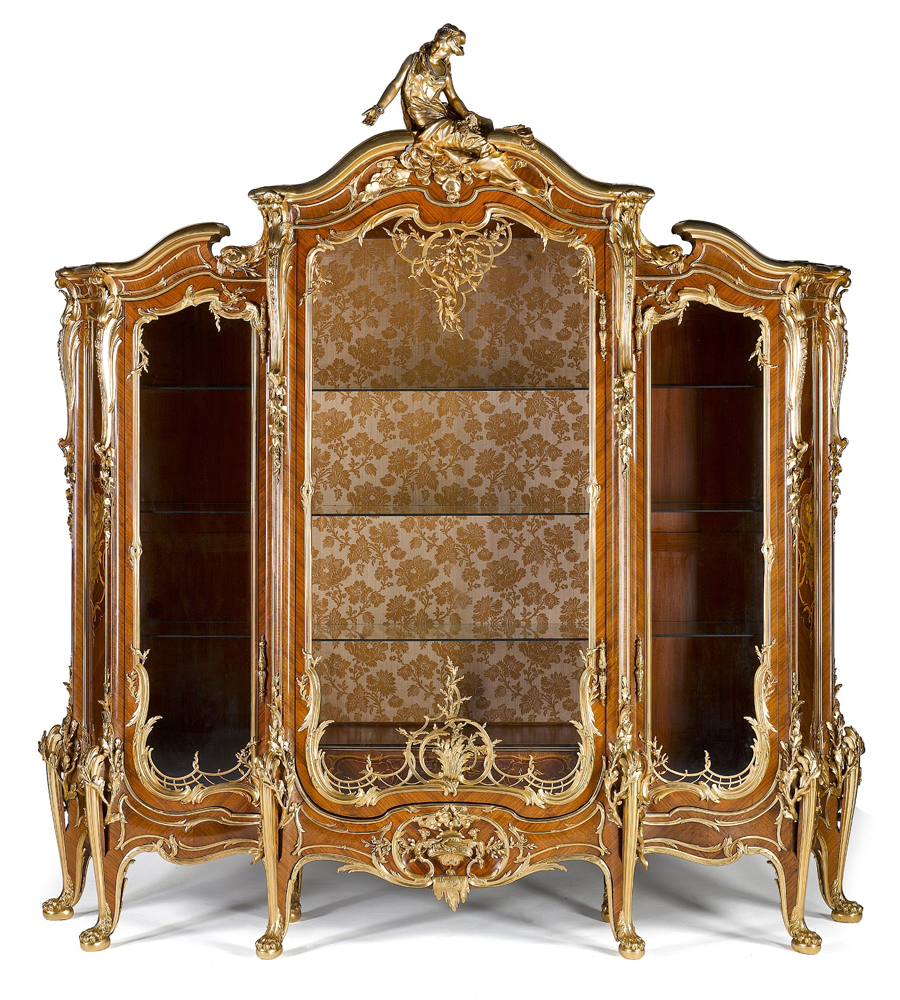
Today many are inclined to look to Mies van der Rohe’s Barcelona chair as an exemplar of modern luxury, however for others, the grandeur of the Louis XV and Louis XVI styles—with its marriage of new and impressive forms with intricate marquetry and sculptural metalwork mounts—has never faded. While the furniture created by the great ébénistes working in France in the 18th century has long been celebrated for its innovation, craftsmanship, and beauty, some may be surprised to learn that one of the greatest practitioners, François Linke (1855-1946), was neither French, nor born during the ancien régime. These details seem cursory when one sees his achievements as a cabinetmaker, and tomorrow June 17 Bonhams in London will auction a rare armoire by Linke that is estimated to sell for £1 to 1.5 million—a sign that his legacy is secure.

Indentified as “Grande armoire a trois portes au lit 706” in his daybooks, this piece came from a bedroom suite by Linke, and is one of only three examples ever made (another sold at Sotheby’s in 2006 for $1.58 million). A tour-de-force from the cast gilt-bronze figure of Minerva on the top to the inlayed exotic woods that depict entwined roses on each side panel, archival records indicate that over 231 different pieces of wood, either in veneers or planks, were used to make this piece. When it was exhibited in 1908 at the Salon de Mobilier in Paris, Linke had already firmly established his reputation as the leading furniture maker of the Belle Epoque.
Linke, who was born in Austria, came to Paris in 1875, and by the early 1880s had set up his own workshop. Working with the renowned sculptor Léon Messagé, who, using wax models of entire pieces of furniture, designed the sculptural mounts, Linke developed a style that was a grand and expressive interpretation of Louis XV and XVI furniture with the same meticulous craftsmanship that marked that era. For the Paris Exposition Universelle in 1900 Linke created a truly remarkable display that included sixteen individual pieces, and was rumored to have been a million-dollar investment for his firm.

Visitors to the recent Olympia International Art & Antiques Fair (June 4-14) were treated to a virtual recreation of Linke’s 1900 Exposition display at the booth of London’s Adrian Alan gallery. Here “Le Grande Bureau”—which was awarded the gold-medal at the 1900 fair, and just awarded the Object of the Year prize at Olympia—was shown alongside “La Grande Bibliotheque” (arguably his chef d’oeuvre, seen in the photo below), for the first time in over one hundred years, along with additional examples from the gallery as well as borrowed items from the privately held Linke archive.


As period photographs of Linke’s booth attest, the effects today are just as dramatic and are a reminder that while deeply connected to the tradition of 18th-century French furniture, many of Linke’s pieces, such as “Le Grande Bureau,” were strikingly innovative designs. They reflect the opulence of their age—Linke’s furniture was embraced by an international clientele (American industrialists, European aristocracy, the Argentinean-based businessman Don Antonio Devoto, and the King of Egypt, Faud I)—and acknowledge the art nouveau spirit promoted by Siegfried Bing and his circle. Considered in this context, a century after their conception, the furniture made by Linke is more compelling than ever.
Those wanting to learn more should pick up a copy of François Linke: The Belle Epoque of French Furniture by Christopher Payne (Antique Collector’s Club, 2003), the definitive text on the subject.
